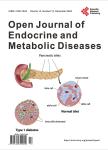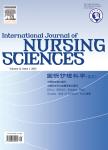
T=题名(书名、题名),A=作者(责任者),K=主题词,P=出版物名称,PU=出版社名称,O=机构(作者单位、学位授予单位、专利申请人),L=中图分类号,C=学科分类号,U=全部字段,Y=年(出版发行年、学位年度、标准发布年)
AND代表“并且”;OR代表“或者”;NOT代表“不包含”;(注意必须大写,运算符两边需空一格)
范例一:(K=图书馆学 OR K=情报学) AND A=范并思 AND Y=1982-2016
范例二:P=计算机应用与软件 AND (U=C++ OR U=Basic) NOT K=Visual AND Y=2011-2016

摘要:Background: In the past few decades, the incidence of cardiometabolic diseases and disorders of the liver, kidney, pancreas, heart, and lung, have been increasing in Western and Asian countries, including Japan. Numerous factors, including abnormal body weight (obesity, overweight, or underweight), infrequent exercise, and other unfavorable lifestyle factors (e.g., smoking and heavy alcohol drinking) have been proposed as risk factors for the development and the progression of diseases, such as type 2 diabetes, hypertension, and dyslipidemia, which ultimately lead to impaired organ function and possibly death. However, the mechanisms that link these risk factors with diseases are still poorly understood, and the potential treatments, including pharmacotherapy and diet, have not been fully evaluated. Methods: In 2011, we established a new collaborative research program, the Saitama Cardiometabolic Disease and Organ Impairment Study (SCDOIS). This multidisciplinary observational epidemiological research study was designed to cover several high-profile diseases and some traditional fields of internal medicine, as well as apparently unrelated fields and particular lifestyle factors, such as unhealthy eating behaviors. In a series of studies, apparently healthy subjects who underwent a regular medical checkup were retrospectively identified based on the results of their medical checkups. In this way, the incidence, prevalence, causality, and clinical relevance of specific conditions and diseases have been investigated in cross-sectional analyses of 100,000 - 200,000 adults, and in longitudinal studies of several thousand subjects who underwent medical checkups multiple times. Discussion: This article describes the background, rationale, purpose, and methods of the SCDOIS. Using data obtained from annual medical checkups, our goals are to 1) establish criteria or identify clinical features that would enable clinicians to detect the presence of abnormal conditions associat

摘要:Objectives:In the hospital setting,poor dietary intake interacts with disease and represents a major and modifiable cause of *** barriers to adequate dietary intake is an important strategy to guide the development of interventions to improve nutrition *** aim of this study reported in this paper was to explore patient,family and health care professionals'perceptions of barriers to and enablers of adequate nutrition care and dietary intake of medical ***:An exploratory qualitative study design incorporating group and individual interviews of patients(n=14),their family members(n=4),and health care professionals(n=18)was *** were recruited pragmatically,using a mix of convenience and purposive sampling.A theoretically informed,semi-structured interview schedule was based on observations of practice and the Theoretical Domains *** were audio-recorded,transcribed verbatim and analysed inductively using a general inductive ***:Three key themes emerged from analysing participant *** approaches to nutrition care reflected the diverse range of health care professionals responsible for nutrition care but who often worked in isolation from their *** work priorities for nurses reflected the challenge in prioritise nutrition care which was often constrained because of other care needs or work-related *** patients to eat highlighted that nurses were often the only health care professional who would provide assistance to patients at mealtimes and lack of available staff could negatively influence patients'nutrition ***:We have identified many complex and interrelated barriers which preclude adequate dietary intake in acute medical *** predominantly reflect issues inherent in the hospital culture and ***-faceted and sustainable interventions that support a facilitating nutrition culture and multidiscip
地址:宁波市钱湖南路8号浙江万里学院(315100)
Tel:0574-88222222
招生:0574-88222065 88222066
Email:yzb@zwu.edu.cn

